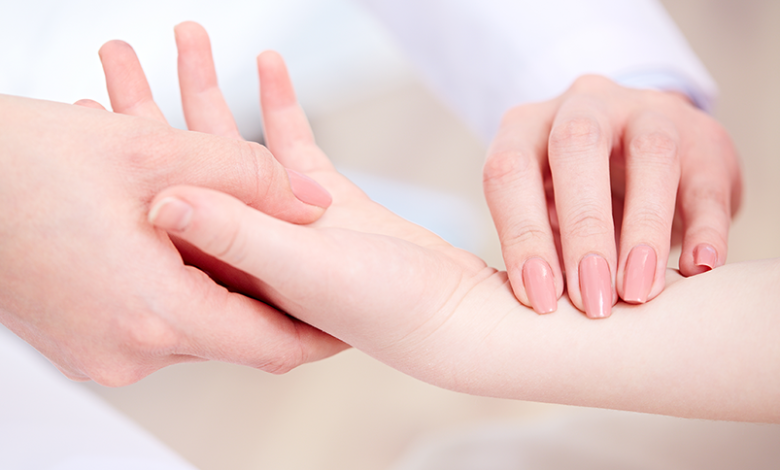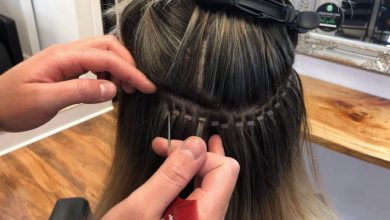An Ultimate Guide to Dupuytren’s Contracture, Causes, And Treatment

The front tissue layer helps anchor and soothe the skin on the palm side of the arm. Without the fascia, the palm skin would become moveable and loose as the skin on the backside of your hand. Unfortunately, in many patients with Dupuytren’s contracture, the palmar fascia gradually starts to tighten then thicken.
Usually, Dupuytren’s first start with a lump in a tissue or under skin nodules formation in the palm. The formation of a pit follows this on the palm surface as the diseased tissue starts to pull the overlying skin.
As Dupuytren’s develops, bands of fascia grow into thick cords that lead one or more fingers into a bent position. This is known as “Dupuytren’s contracture.” Though the cords in the palm look like a muscle, the muscle is not involved in Dupuytren’s.
In other cases, the Dupuytren’s contracture develops gradually over time and may stay mild so that no Dupuytren’s contracture treatment is required. However, it gets difficult to straighten the affected fingers in severe cases. When this happens, Dupuytren’s contracture therapy is required to help reduce the contracture and enhance the motion of the affected fingers. Usually, as the contracture gets severe, the work of the fascia gets affected, and the treatment results less in full correction.
How does this look?
Dupuytren’s contracture affects the layer of connective tissue under the skin of our palm – known as fascia. Knots of this tissue are formed under the skin, which eventually creates a thick cord, resulting in one or more fingers pulling towards the palm. Usually, these two fingers are farthest from the thumb. Unfortunately, the fingers that are affected can’t be unbent totally, which complicates our everyday activities like putting our hands in pockets, putting on gloves, or just shaking hands.
What should I do?
There is no accurate answer. Some cases of Dupuytren’s contracture do not develop past the cord formation. In such cases, if the cord is not painful, then no non-surgical treatment for Dupuytren’s is required. However, surgical treatment may be recommended if the nodules develop to cords or get painful. Surely, if flexion contractures grow, restraining the delay of affected fingers, one must look for some medical attention.
How is Dupuytren’s contracture treated?
The healthcare provider creates a care plan based on:
Your past health, age, and overall health
How serious is the condition?
How well you can handle medicines, treatments, or Dupuytren’s contracture therapy
What you would like to do
There is no exact cure for Dupuytren’s contracture. The medical condition is not dangerous until it gets very serious. Many people don’t get the right treatment. But Dupuytren’s contracture treatment slows the disease or helps ease the symptoms.
Dupuytren’s contracture treatment includes:
Surgery. This is the most common treatment for severe cases. It is done when you do partial use of the affected hand. For example, in Dupuytren’s contracture surgery, the doctor cuts your affected hand and removes the cord. This improves the flexibility of the fingers. However, some people experience the returning of contractures which requires surgery again.
Steroid shot. If the lump is painful, the steroid injection helps ease the pain. In other cases, it stops the condition from getting worse. However, you may have to take the injection frequently.
Radiation therapy. Dupuytren’s contracture treatment is not that common in the U.S. Here a low energy X-rays are focused on the cords. This is the best treatment for the early stage of the disease. It softens the nodules and helps keep the contractions from happening again.
Enzyme injection. This is a modern, less invasive treatment performed by a specially trained doctor. First, the surgeon injects the medicine in the area to numb your hand. Then the enzyme is jabbed in the lump of your tissue. It takes several hours to break and dissolve the hard bands. This allows the fingers to loosen and straighten when the surgeon breaks the nodules, usually the following day.
Needle aponeurotomy. This is another modern, less invasive Dupuytren’s contracture therapy. Medicines are injected in the area that numbs your hand. The surgeon then uses a needle to split the affected tissue.
What are the complications in Dupuytren’s contracture?
The doctor will let you know about each of the risks with you and take précised measures to help prevent possible complications. Possible complications and risks of surgery include:
Pain
Scarring
Injury to nerves and blood vessels
Wound infection
Stiffness
Loss of sense. Temporary loss of sensation resulting from stretching of nerves contracted for a long time.
Loss of feasibility of the affected finger
Summary:
Some patients must wait before the non-surgical treatment for Dupuytren’s rather than jumping for a treatment that can be costly, take your time, and may have some side effects. The tests empower you to accurately measure whether the condition worsens and, hence, whether it is the right time for you to think about different Dupuytren’s contracture treatments for early progressive Dupuytren’s disease.





